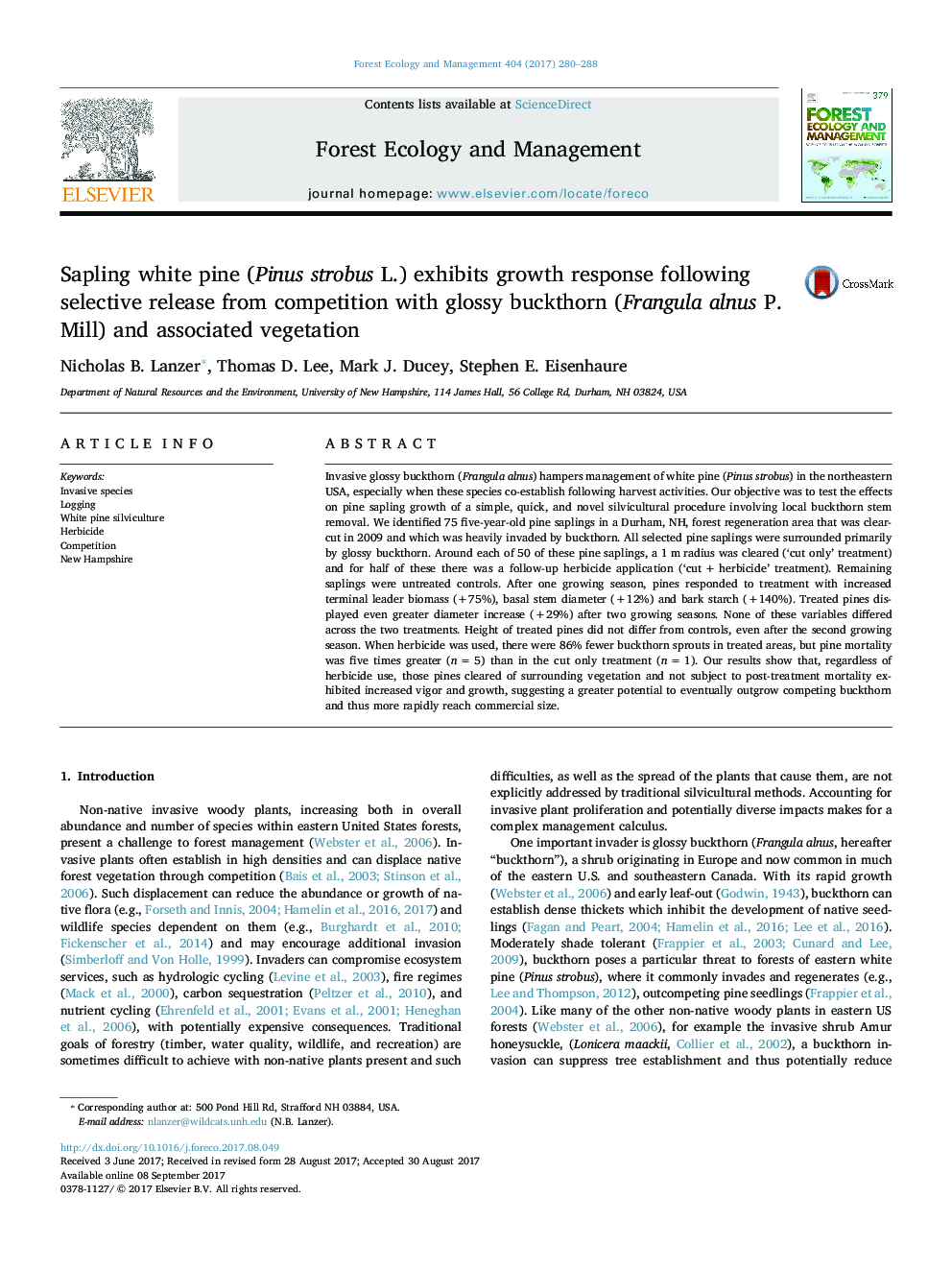| کد مقاله | کد نشریه | سال انتشار | مقاله انگلیسی | نسخه تمام متن |
|---|---|---|---|---|
| 6459173 | 1421354 | 2017 | 9 صفحه PDF | دانلود رایگان |

- We tested localized control of invasive glossy buckthorn around white pine saplings.
- Released white pine showed increased diameter growth, bark starch, and foliar biomass.
- Herbicide suppressed butt sprouting by buckthorn but increased pine mortality.
- The method may offer a viable treatment option in invaded forest systems.
Invasive glossy buckthorn (Frangula alnus) hampers management of white pine (Pinus strobus) in the northeastern USA, especially when these species co-establish following harvest activities. Our objective was to test the effects on pine sapling growth of a simple, quick, and novel silvicultural procedure involving local buckthorn stem removal. We identified 75 five-year-old pine saplings in a Durham, NH, forest regeneration area that was clear-cut in 2009 and which was heavily invaded by buckthorn. All selected pine saplings were surrounded primarily by glossy buckthorn. Around each of 50 of these pine saplings, a 1 m radius was cleared ('cut only' treatment) and for half of these there was a follow-up herbicide application ('cut + herbicide' treatment). Remaining saplings were untreated controls. After one growing season, pines responded to treatment with increased terminal leader biomass (+75%), basal stem diameter (+12%) and bark starch (+140%). Treated pines displayed even greater diameter increase (+29%) after two growing seasons. None of these variables differed across the two treatments. Height of treated pines did not differ from controls, even after the second growing season. When herbicide was used, there were 86% fewer buckthorn sprouts in treated areas, but pine mortality was five times greater (n = 5) than in the cut only treatment (n = 1). Our results show that, regardless of herbicide use, those pines cleared of surrounding vegetation and not subject to post-treatment mortality exhibited increased vigor and growth, suggesting a greater potential to eventually outgrow competing buckthorn and thus more rapidly reach commercial size.
Journal: Forest Ecology and Management - Volume 404, 15 November 2017, Pages 280-288